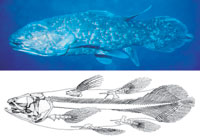 Men! Fed up with women faking headaches? Grant yourself lucky that you are not a mosquito fish, as females wouldn't think twice about attacking you when you make a pass at them. As they are not keen on intercourse, females select for strong male genes by attacking those that show them some interest. Therefore, the lucky (it's often the little) one sneaks up from behind, quickly retracting after copulation to prevent a nasty blast.
Men! Fed up with women faking headaches? Grant yourself lucky that you are not a mosquito fish, as females wouldn't think twice about attacking you when you make a pass at them. As they are not keen on intercourse, females select for strong male genes by attacking those that show them some interest. Therefore, the lucky (it's often the little) one sneaks up from behind, quickly retracting after copulation to prevent a nasty blast.
All sexual activity among mosquito fish relies on male coercion, which depends on environmental temperatures. Dr. Robbie Wilson from the University of Queensland, Australia, will present his work at the Society for Experimental Biology Annual Main Meeting in Barcelona, on Thursday 14th July [session A9] where he will reveal that female "willingness" is influenced by the temperature of their environment, i.e. at higher temperatures, they are more likely to linger around males before swimming off.
Unlike most other fish species, male mosquito fish possess a penis-like organ (gonopodium), fertilising the eggs inside the female body. Male mosquito fish can reproduce over a temperature range of 14-38ºC, but can only produce young at temperatures from 20ºC upwards. Females therefore carry sperm until a suitable temperature arises for fertilisation. Research showed that male fish are adapted to their environmental temperatures; some "perform" better in colder, others in warmer environments. Short-term adjustments to their muscle structure and function enables them to respond to different temperatures.
Mosquito fish were introduced from the south-east of America into Asia, Australia, Mediterranean Europe and Northern Africa by the WHO to control mosquito populations in the 1920's. Currently, these fish have overgrown local fish populations and are damaging the Australian native fish and frog populations, as they eat tadpoles and young fish. Research into reproductive habits will help explain how to take measures in decreasing their population.
Source : Society for Experimental Biology
 Print Article
Print Article Mail to a Friend
Mail to a Friend
